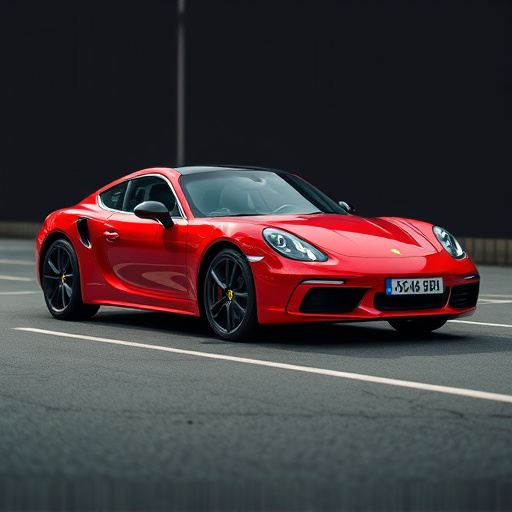Seamless Wall Graphics Installation: Choosing the Perfect Adhesive
For optimal wall graphics installation, understanding your project specifics is vital. Adhesive sele…….
In the realm of interior design and urban aesthetics, wall graphics have emerged as a dynamic and captivating medium, revolutionizing how we adorn and interact with our surroundings. “Wall graphics installation” refers to the art and process of affixing visually stunning graphics, murals, or artwork to walls, both indoors and outdoors, to create immersive experiences and enhance the visual landscape. This article aims to delve into the intricacies of wall graphics installation, exploring its historical roots, global impact, economic significance, technological innovations, regulatory considerations, and future prospects. By the end, readers will grasp the profound influence this art form has on our physical environments and society at large.
Definition: Wall graphics installation is a creative process that involves the strategic placement and application of graphic elements onto various wall surfaces. These graphics can range from intricate murals, custom artwork, to more subtle decorative patterns, all designed to transform bland walls into captivating visual narratives.
Core Components:
Graphic Design: The foundation lies in meticulous graphic design, where artists and designers conceptualize and create visuals that align with the intended message, aesthetic, or theme. This process includes sketching, digital illustration, and vectorization.
Surface Preparation: Wall surfaces play a crucial role in the longevity of the installation. Proper preparation involves cleaning, patching, and applying appropriate primers or adhesives to ensure the graphics adhere securely.
Application Techniques: Installers employ various methods, such as hand-painting, airbrush, vinyl cutting, or digital printing, to apply the graphics accurately and with precision. Each technique offers unique advantages, catering to different artistic visions and project scopes.
Adhesives and Materials: The choice of adhesives, laminates, and protective coatings is vital for maintaining the integrity of the installation over time. Water-based, solvent-based, or UV-curable adhesives are commonly used, each with specific advantages and environmental impacts.
Historical Context:
The practice of adorning walls with artwork dates back centuries, with ancient civilizations like the Egyptians and Greeks utilizing fresco painting and murals to narrate stories and honor deities. However, the modern concept of wall graphics installation gained traction in the late 20th century, driven by the growing desire for expressive, customizable spaces. The advent of digital printing technologies further democratized access to this art form, enabling both professional artists and hobbyists to create and install complex graphic designs.
Wall graphics installation has transcended cultural and geographical boundaries, becoming a global phenomenon that reflects local aesthetics, narratives, and aspirations. Here’s a glimpse into its international influence:
| Region | Notable Trends and Influences | Unique Aspects |
|---|---|---|
| North America | Urban renewal projects often incorporate large-scale murals as a means of community engagement and aesthetic transformation. | Emphasis on public art and community involvement |
| Europe | Historic cities like Berlin, Paris, and Rome embrace street art and murals, blending contemporary styles with historical architecture. | Rich street art culture and legal recognition for certain forms of public art |
| Asia Pacific | Rapid urbanization in countries like China and Japan has led to vibrant mural art thriving in metropolitan areas. | Fusion of traditional Asian aesthetics with modern graphic design elements |
| Latin America | Countries like Brazil and Mexico celebrate indigenous and folk art through murals, telling stories of cultural heritage. | Strong connection to local traditions and folklore |
| Middle East | Modern cities like Dubai and Abu Dhabi feature contemporary artwork alongside iconic architecture, attracting global artists. | Blend of traditional and modern artistic influences |
These regional variations not only showcase the diverse interpretations of wall graphics but also highlight the power of art in shaping urban identities and fostering community engagement.
The wall graphics installation industry is a significant contributor to various economic sectors, from creative industries to construction and real estate.
Technological innovations have played a pivotal role in shaping the capabilities and possibilities of wall graphics installation:
Digital Printing: The advent of high-resolution, large-format digital printers has revolutionized mural creation, allowing for intricate designs with sharp details and vibrant colors. This technology enables artists to produce complex artwork swiftly and accurately.
Vinyl Cutting and Heat Transfer: Vinyl cutting machines enable precise cutting of graphic elements, which can then be applied to walls using heat transfer techniques. This method is cost-effective for producing custom graphics and signage.
3D Printing: While still emerging, 3D printing offers the potential for creating unique, relief-like wall graphics with depth and texture. It allows for intricate, complex designs that were previously challenging to achieve.
Interactive Displays: Incorporating touch-sensitive or responsive materials into wall graphics enables interactive storytelling and educational experiences, making public art more engaging.
The legal landscape surrounding wall graphics installation varies across jurisdictions, reflecting cultural norms, property rights, and artistic expression. Here are some key considerations:
Permits and Licensing: In many cities, artists or businesses must obtain permits for large-scale murals, especially in public spaces. These regulations ensure safety, maintain historical integrity, and protect public property.
Copyright and Ownership: Establishing ownership rights for wall graphics is essential. Artists retain copyright, but property owners may have specific rights to display artwork on their walls, especially in commercial settings.
Cultural Sensitivity: Some regions have strict guidelines regarding content, ensuring murals align with local values and do not offend cultural or religious groups. This is particularly important in diverse urban centers.
Environmental Impact: Regulations may address the use of eco-friendly adhesives and materials to minimize environmental harm during installation and maintenance.
Despite its numerous benefits, wall graphics installation faces challenges and criticisms that require thoughtful strategies for resolution:
Weathering and Maintenance: Outdoor murals are susceptible to UV damage, fading, and peeling. Regular maintenance is necessary, but the cost and effort can be prohibitive. Developing durable, weather-resistant materials and adhesives is an ongoing challenge.
Permission and Legal Issues: Obtaining permissions for murals in public spaces can be a lengthy process, especially in densely populated urban centers. Artists and property owners must navigate complex legal frameworks, sometimes leading to delays or restrictions.
Cultural Appropriation: There is a growing concern about cultural appropriation in street art, where artists from one culture may represent elements of another without proper context or respect. Promoting cultural sensitivity and education is crucial to addressing this issue.
Nuisance and Vandalism: In some cases, murals become targets for vandalism, causing financial losses and community frustration. Implementing security measures and community engagement strategies can help mitigate these issues.
The city of Baltimore, Maryland, embarked on a transformative project called “Baltimore’s Wall of Honor” in 2014, aiming to revitalize blighted neighborhoods through murals. This initiative involved collaborating with local artists, property owners, and community organizations. The results were remarkable:
Singapore’s National Arts Council has played a pivotal role in promoting public art, incorporating wall graphics into urban landscapes to enhance cultural experiences and connect artists with audiences.
The future of wall graphics installation presents exciting possibilities and growth areas, shaped by technological advancements, shifting consumer preferences, and changing urban landscapes.
Interactive and Digital Murals: With the rise of smart cities, interactive murals that respond to audience interactions or environmental factors will gain traction. This blend of art and technology enhances public spaces and engages users in new ways.
Sustainable Materials: There is a growing demand for eco-friendly materials, leading to the development of biodegradable adhesives, recyclable laminates, and low-VOC (volatile organic compound) paints. These innovations address environmental concerns while maintaining aesthetic appeal.
Virtual Reality (VR) and Augmented Reality (AR): VR and AR technologies can revolutionize mural design and installation by enabling artists to create and visualize their work in 3D space before physical application, enhancing accuracy and efficiency.
Micro-murals: In response to limited wall space or budget constraints, micro-murals—small-scale graphics that pack a visual punch—are gaining popularity. These subtle yet expressive artworks can be discreetly incorporated into various indoor spaces.
3D Art and Illusionary Murals: As mentioned earlier, 3D printing technology will play a significant role in creating immersive, relief-like murals that challenge perceptions and offer unique visual experiences.
Community-Driven Art: Encouraging community participation in mural creation is an emerging trend, fostering a sense of ownership and collective identity. This approach aligns with the global movement towards more inclusive and diverse public art.
Wall graphics installation has evolved from a niche artistic pursuit to a powerful tool for urban transformation, cultural expression, and community engagement. Its global impact is evident in the diverse interpretations and unique narratives that adorn walls worldwide. As technology advances, regulatory frameworks adapt, and consumer demands shift, this art form will continue to evolve, shaping our physical environment and fostering connections between people, places, and ideas.
Q: How do I choose the right wall graphics for my space?
A: Consider your space’s lighting, color scheme, and intended atmosphere. Assess the purpose of the graphic—is it decorative, informative, or promotional? Collaborate with designers to select visuals that align with your vision and enhance the space’s overall aesthetic.
Q: Can wall graphics withstand different weather conditions?
A: Outdoor murals require weather-resistant materials and adhesives to endure varying climates. Modern technologies offer durable solutions, but regular maintenance is still necessary to ensure longevity. Consult specialists for recommendations suited to your region.
Q: Are there any legal considerations I should be aware of before commissioning a mural?
A: Yes, obtain the necessary permits and understand property rights, especially in public spaces. Ensure the artwork aligns with local regulations and cultural norms to avoid legal issues and potential community backlash.
Q: How can wall graphics contribute to sustainability?
A: Eco-friendly materials, such as biodegradable adhesives, recycled laminates, and low-VOC paints, minimize environmental impact. Additionally, proper maintenance and reuse of murals can extend their lifespan, reducing the need for frequent replacements.
Q: Can wall graphics be removed or altered after installation?
A: Most murals can be removed with careful preparation, but this may cause some surface damage. Altering existing murals is possible but depends on the specific technique used; it’s best to consult professionals for options and recommendations.

For optimal wall graphics installation, understanding your project specifics is vital. Adhesive sele…….

Maintaining vibrant wall graphics requires daily dusting with a microfiber cloth and occasional mild…….